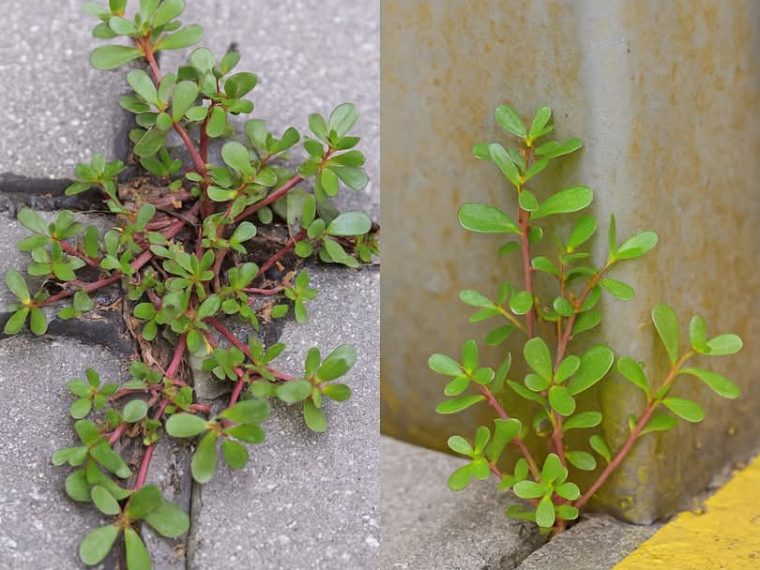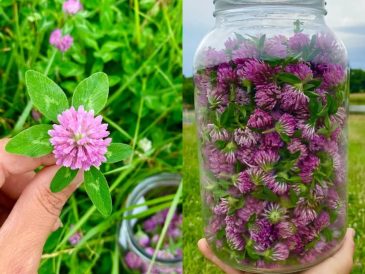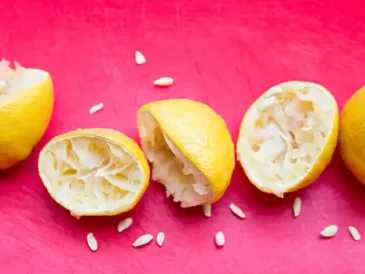Purslane (Portulaca oleracea) is an annual plant often considered a weed, but it is actually a highly medicinal plant used in both folk medicine and gastronomy. Originally from Asia, it has spread worldwide, growing in gardens, fields, and even cracks in sidewalks. Despite its numerous health benefits, many people mistakenly remove it, not realizing its value.
Purslane is a delicate plant rich in medicinal substances. Most people consider it a nuisance because it spreads rapidly, but in reality, it is a nutritional powerhouse. This plant has branched, reddish, fleshy, and juicy stems that sprawl across the ground, outcompeting other plants. It can reach a height of 15 to 30 cm. Its leaves are fleshy, oval-shaped, and green, with older leaves sometimes showing a reddish edge. Purslane produces small, yellow flowers that bloom from July to September, making it an excellent honey-bearing plant. It generates abundant seeds that are easily dispersed and have the highest germination rate in their second year. Additionally, it can be propagated easily from cuttings. Even uprooted plants can re-root when they come into contact with soil, making it a highly resilient plant.
Culinary and Medicinal Uses
In gastronomy, purslane is typically consumed fresh in salads, pestos, smoothies, or stews. It can also be dried and stored for winter use. In traditional medicine, purslane is valued for its ability to enhance immunity, improve circulation, strengthen the heart, support cancer recovery, and even aid in healing wounds. Various sources suggest that it helps prevent headaches and migraines, strengthens bones, supports child development, and benefits the thyroid, skin, and digestive organs.
Purslane is exceptionally nutritious, containing high levels of omega-3 fatty acids, vitamins A, B, and C, and essential minerals such as magnesium, calcium, and iron. Despite being commonly found as a wild plant, cultivating it in a controlled environment ensures a steady supply of this beneficial green.
Cultivation and Growth Conditions
Although purslane grows naturally as a weed, continuous removal will reduce its presence over time. If you want to cultivate it, it is best to prepare a designated bed in a sunny location with well-drained soil. It is highly drought-resistant and can thrive in poor soil conditions.
Purslane can be grown from plants found in the wild, from cuttings, or from seeds. To plant it, simply bury uprooted plants in the soil or lay cuttings on the ground and lightly cover them with soil. After planting, water the cuttings and plants to encourage root development. If using seeds, simply sprinkle them on the soil surface, as they germinate best when exposed to light. Sowing is typically done in the spring.
This plant is highly resilient, tolerating both extreme heat and cold. It requires minimal care beyond occasional pruning. To manage growth, cut young plants before they flower and set seed. Leave part of the base intact, as it will regrow with fresh stems. Always allow a few plants to mature and produce seeds to ensure self-sowing for the following year.
Nutritional Benefits
A 2014 study published in The Scientific World Journal detailed the nutritional composition of 100 grams of purslane:
- Only 16 kcal
- 3.4 g of carbohydrates
- 1.3 g of protein
- 0.1 g of fat
- Niacin, folates, pantothenic acid, pyridoxine, riboflavin, thiamin, vitamin A, and vitamin C
- Electrolytes: sodium and potassium
- Minerals: calcium, copper, iron, magnesium, phosphorus, selenium, and zinc
Purslane is one of the richest plant sources of omega-3 fatty acids. Unlike fish oil, which is also high in these healthy fats, purslane does not contain cholesterol. The omega-3 fatty acids in purslane, such as alpha-linolenic and gamma-linolenic acids, help protect against cardiovascular diseases, inflammation, and tumor growth. A balanced intake of these fats is crucial for long-term health and disease prevention.
In addition to omega-3s, purslane contains potent plant compounds such as alpha-tocopherol (a precursor of vitamin C) and beta-carotene, which is converted into vitamin A in the body. These compounds have antioxidant properties that help combat oxidative stress.
Important Considerations
Despite its numerous benefits, people with kidney stones should avoid consuming large amounts of purslane. This plant contains oxalic acid, which binds with calcium to form insoluble salts that may contribute to kidney stone formation. Those prone to kidney stones should consume purslane in moderation.
How to Use Purslane in Your Diet
Purslane is a free and highly nutritious green that can be a valuable addition to summer salads. Since it grows abundantly in nature, it is easy to find and harvest. However, avoid collecting purslane from roadsides or polluted areas, as it may absorb heavy metals and toxic compounds from the environment.
One of the best ways to enjoy purslane is in a Greek salad, where it pairs well with tomatoes, cucumbers, olives, and feta cheese. It also complements eggs and is excellent in stews. A simple and delicious salad can be made by mixing purslane with garlic, salt, vinegar, and olive oil. Another option is to combine it with sour cream, salt, and fresh cucumbers for a refreshing and nutritious snack.
Final Thoughts
Purslane is a powerful yet often overlooked plant with remarkable health benefits. Next time you see this plant growing in your garden, consider adding it to your diet instead of discarding it. With its high nutritional value and versatility in cooking, purslane is a free, accessible superfood that deserves more recognition. Give it a try and enjoy its many benefits!





